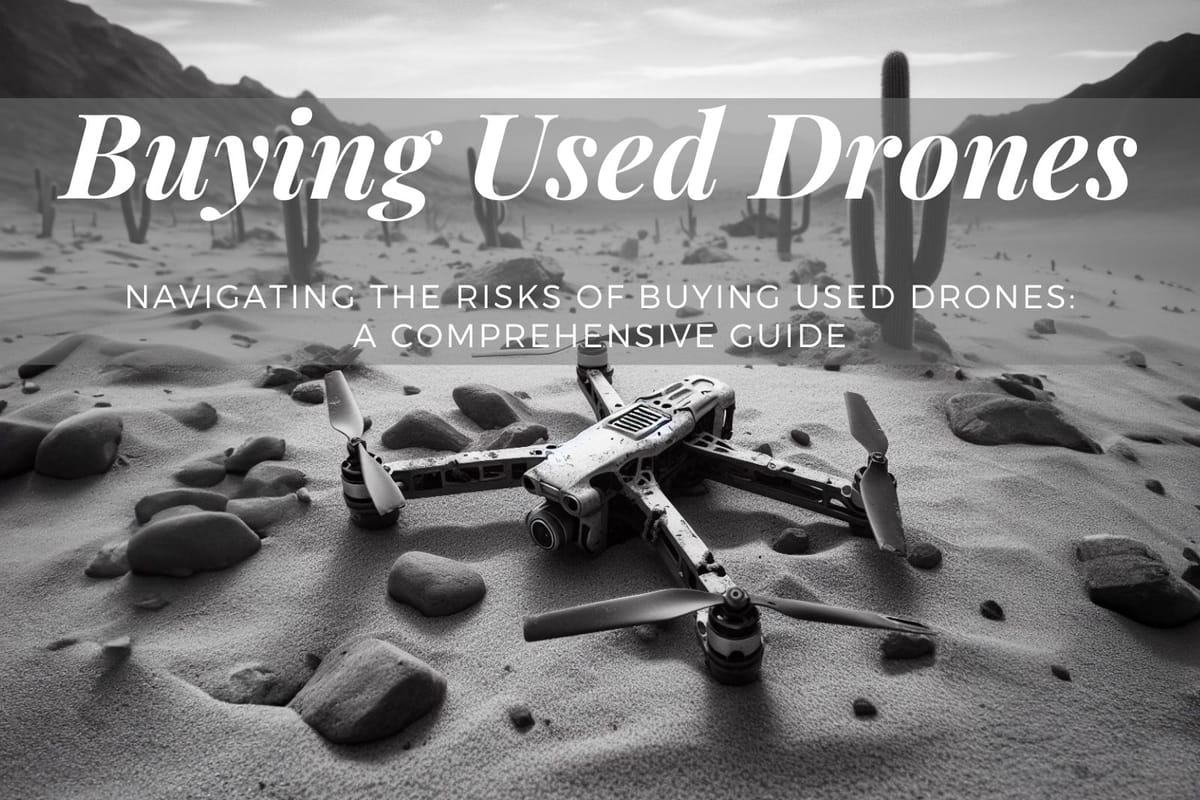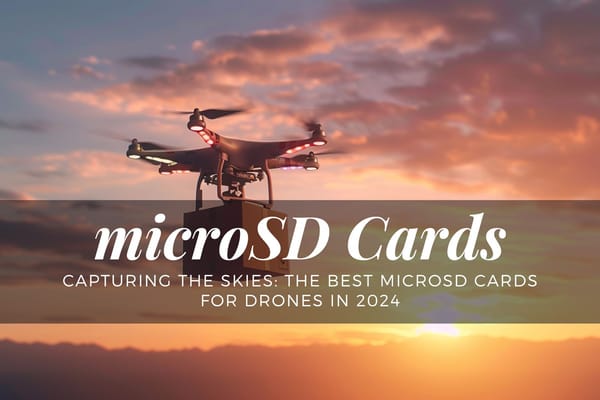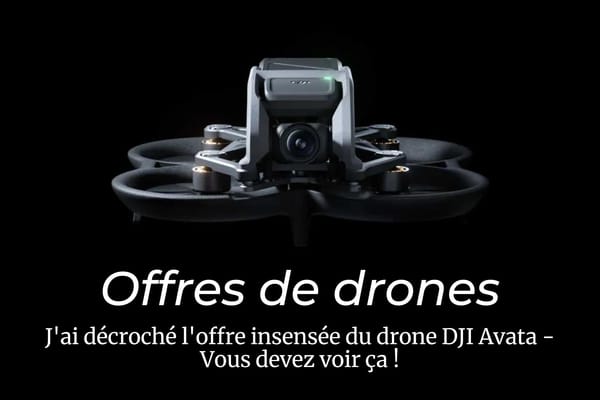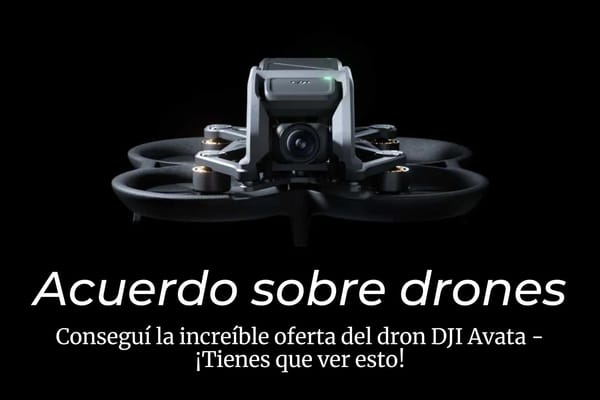Navigating the Risks of Buying Used Drones: A Comprehensive Guide

Understanding the Risks of Buying Used Drones
Diving into the world of drones? Beware the risks of buying used drones. Hidden damage, expired warranties, and potential account binding issues can turn your exciting purchase into a headache. Yet, with careful research and inspection, you can navigate these risks and find a great deal. Stay tuned as we delve deeper into these risks and provide tips to ensure your drone-buying experience is smooth and rewarding.
Introduction
Buying a used drone can be a cost-effective way to enter the world of drone technology. However, it's essential to be aware of the potential risks involved. This article will explore the various risks of buying used drones and provide tips on how to mitigate them.
Key Takeaways
- Used drones may not come with a manufacturer's warranty.
- The drone's battery life and overall condition can be uncertain.
- There may be hidden damage or malfunctions that aren't immediately apparent.
- The drone may have been used in a way that has caused wear and tear, reducing its lifespan.
- There may be difficulties in finding replacement parts for older or discontinued models.
The Risks of Buying Used Drones
Lack of Warranty
Purchasing a used drone can be an exciting venture into the world of aerial exploration, offering cost savings without compromising on functionality. However, it comes with its fair share of risks, and one of the most prominent concerns is the potential absence of a manufacturer's warranty. This lack of assurance can cast a shadow over what might otherwise be a thrilling experience, as it places the responsibility squarely on the buyer in the event of malfunctions or breakages.
A manufacturer's warranty serves as a safety net, offering protection against unforeseen technical issues or defects that may emerge after the purchase. It is a testament to the manufacturer's confidence in the product's quality and provides the buyer with a sense of security. When this safeguard is absent in the case of a used drone, the buyer becomes vulnerable to the financial implications of repairs or replacements.
Battery Life
The battery life of a used drone introduces a level of uncertainty into the overall performance and longevity of the device. When assessing the battery health of a pre-owned drone, it's crucial to understand that manufacturers typically provide ratings based on a specific number of charge and discharge cycles. Over time, these cycles take a toll on the battery's capacity, influencing its ability to hold and deliver power effectively.
Manufacturers often specify the expected lifespan of a drone battery in terms of cycles, with the understanding that a cycle constitutes a complete charge and discharge. As a used drone changes hands, the buyer may inherit a battery that has undergone a considerable number of these cycles, impacting its overall health. It's important to note that a battery's capacity to hold a charge diminishes gradually over time, and the rate of decline is influenced by factors such as usage patterns, charging practices, and environmental conditions.
Hidden Damage or Malfunctions
When considering the purchase of a used drone, it is crucial to be aware of potential hidden damage or malfunctions that may not be immediately apparent. Issues such as compromised GPS signals, erratic camera feed transmission, and internal damage from previous crashes or hard landings can significantly impact the drone's performance and safety. Buyers must conduct a thorough pre-purchase inspection, examining both the physical condition of the drone and the health of its components, including batteries. Additionally, requesting maintenance records or flight logs from the previous owner can provide valuable insights into the drone's history and any past issues.
Despite the allure of a more affordable price tag, the buyer should prioritize diligence to ensure a reliable and safe flying experience. A meticulous examination can uncover potential pitfalls, allowing the purchaser to make an informed decision about the used drone's overall condition. By addressing these concerns upfront, buyers can minimize the risk of encountering unexpected problems and maximize the enjoyment and longevity of their drone investment.
Wear and Tear
The wear and tear of a used drone are critical factors influencing its overall condition and performance. Depending on its usage and maintenance history, a drone may exhibit signs of mechanical stress, physical damage, and diminished functionality. Flight hours, exposure to adverse weather, and neglect of routine maintenance contribute to wear on moving parts, affecting motors, propellers, and electronic components. Physical damage, such as dents and scratches, can compromise aerodynamics and structural integrity. The health of batteries, proper storage practices, and the condition of sensors and electronics also play pivotal roles in determining a drone's longevity. Buyers evaluating a used drone should conduct a thorough inspection to assess both visible damage and internal components, ensuring they make informed decisions about the drone's value and reliability.
In essence, a well-maintained drone with minimal wear and tear is more likely to deliver optimal performance and a longer lifespan. On the other hand, a drone that has experienced extensive stress without proper care may show signs of reduced functionality, making it essential for potential buyers to scrutinize both external and internal aspects before making a purchase decision.
Difficulty Finding Replacement Parts
When opting for a used drone, especially older or discontinued models, the challenge of finding replacement parts becomes a significant concern. As manufacturers focus on newer releases, the production of components for aging drones may be discontinued, resulting in a limited supply of essential parts. This scarcity not only leads to prolonged downtime as users search for specific components but can also inflate repair costs, potentially negating the initial cost savings associated with buying a used drone. In some cases, the unavailability of replacement parts may render repairs nearly impossible, forcing owners to either abandon their investment or resort to makeshift solutions that compromise the drone's overall functionality and safety.
To navigate these challenges, prospective buyers should conduct thorough research on the availability of spare components for the specific drone model of interest. Checking online forums, community groups, and reaching out to manufacturers or authorized dealers can provide valuable insights into the current status of replacement parts. Making an informed decision about a used drone involves not only considering its initial purchase cost but also factoring in the potential challenges and expenses associated with maintaining and repairing the device over time.
Mitigating the Risks
Thorough Inspection
When considering the purchase of a used drone, a meticulous inspection is indispensable to guarantee its reliability and functionality. Start with a visual examination, checking for any visible damage on the frame, propellers, gimbal, and camera. Subsequently, test all the drone's functions, assess the battery health, inspect the remote controller, and ensure that firmware and software are up-to-date. Requesting original documentation, such as packaging, manuals, and accessories, adds an extra layer of authenticity to the transaction. It's also prudent to inquire about the drone's flight history and maintenance records for a comprehensive understanding of its past usage and care.
This comprehensive approach to pre-purchase inspection not only safeguards against potential issues but also provides a clearer picture of the drone's overall condition. By adhering to these steps, buyers can make informed decisions, mitigating the risks associated with acquiring a used drone and ensuring a more satisfying and trouble-free ownership experience.
Test Flight
Before purchasing a used drone, it is crucial to conduct a thorough test flight to assess its performance and identify potential issues. This process involves evaluating flight stability, control responsiveness, battery life, GPS accuracy, camera functionality, obstacle avoidance, and checking for unusual noises. By prioritizing this step, buyers can make informed decisions, ensuring a reliable and enjoyable drone-flying experience while minimizing the risk of acquiring a drone with hidden problems.
Check the Drone's History
When considering the purchase of a used drone, engage the seller in a detailed conversation about its history, including usage patterns and maintenance. Additionally, request access to the drone's flight logs for a comprehensive assessment of its flying hours and any potential issues, ensuring an informed and confident buying decision.
Consider the Cost of Replacements
When buying a used drone, it's vital to assess potential replacement costs for critical components like batteries and essential parts. Evaluate the battery's condition and factor in the cost of a replacement if needed. Additionally, examine other key parts such as propellers and sensors, considering potential expenses for repairs. Researching the availability and cost of spare parts for the specific drone model provides valuable insights, helping buyers make informed decisions aligned with their budget and performance expectations. This thorough evaluation ensures the purchase of a used drone is both cost-effective and meets the desired performance standards.
Conclusion
In the fast-evolving world of drone technology, the allure of acquiring a used drone at a lower cost is undeniable. However, as we've explored, this cost-effective approach comes with its share of risks and considerations. Understanding and addressing these risks is paramount for ensuring a satisfactory and safe purchase.
One of the primary concerns is the potential absence of a manufacturer's warranty. When opting for a used drone, buyers expose themselves to the responsibility of repairs or replacements in case of malfunctions. The uncertainty surrounding battery life further complicates matters, as the performance of used batteries may decrease over time, impacting the overall functionality of the drone.
Hidden damage or malfunctions pose a significant risk, potentially affecting critical components like GPS signals or transmission screens. Wear and tear from previous use can reduce a drone's lifespan and compromise its performance. Additionally, the challenge of finding replacement parts for older or discontinued models can turn a seemingly good deal into a costly and impractical venture.
Mitigating these risks requires a proactive approach. Prospective buyers should conduct thorough inspections, examining the drone for visible damage and ensuring all functions work correctly. Performing a test flight is crucial to identifying potential performance issues that might not be apparent during a static inspection. Inquiring about the drone's history—its frequency of use, maintenance, and reasons for selling—provides valuable insights into its overall condition.
Consideration of the cost of potential replacements, such as batteries or other parts, is essential before finalizing the purchase. By arming themselves with information and taking these precautionary steps, buyers can navigate the used drone market more confidently.
As technology advances and newer models continue to emerge, the decision to buy a used drone remains a balancing act between cost savings and potential risks. Ultimately, an informed and discerning approach can help enthusiasts and professionals alike enjoy the benefits of drone technology without compromising on safety and performance.
FAQs
- What should I check before buying a used drone?
Before buying a used drone, you should check the drone's overall condition, battery life, and whether it comes with a warranty. You should also perform a test flight and ask the seller about the drone's history. - What are the risks of buying a used drone?
The risks of buying a used drone include a lack of warranty, uncertain battery life, hidden damage or malfunctions, wear and tear from previous use, and difficulties finding replacement parts for older or discontinued models. - How can I mitigate the risks of buying a used drone?
You can mitigate the risks of buying a used drone by thoroughly inspecting it, performing a test flight, asking the seller about the drone's history, and considering the cost of any necessary replacements.


